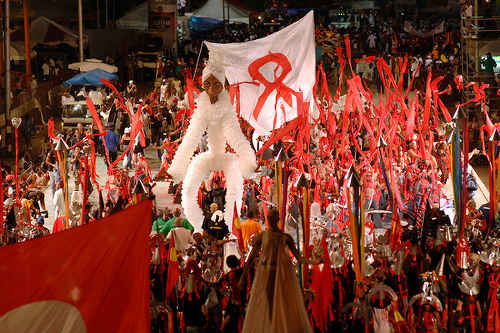Works of mas have come into the spotlight recently. In particular, the right to photograph, record or broadcast such works during Carnival.
The Trinidad and Tobago Copyright Organisation (TTCO)—the collective management organisation (CMO) that claims responsibility for administering the copyright in ‘works of mas’—has suggested that photography, videography and/or broadcasting of such works is illegal without authorisation and anyone wishing to do same must first obtain permission from them or face claims of copyright infringement. That is partly true.

(Courtesy Allan V Crane/Wired868)
Trinidad and Tobago was the first jurisdiction to recognise ‘works of mas’ as a copyright protected work. It is a meaningful way of protecting aspects of our culture that don’t readily fall into the traditional copyright model and agenda promoted by European countries.
Sometimes, as a nation, we don’t give ourselves enough credit. This is a notable example. Under the Copyright Act, a ‘work of mas’ is defined under as:
“an original production intended to be performed by a person or a group of persons in which an artistic work in the form of an adornment or image presented by the person or persons is the primary element of the production, and in which such adornment or image may be accompanied by words, music, choreography or other works, regardless of whether the production is intended to be performed on stage, platform, street or other venue.”
In other words, it is a derivative work that comprises all of the primary features of mas—that is the underlying artistic, dramatic and musical works. A notable example would be Peter Minshall’s Tan Tan and Saga Boy.
This is the type of work, and originality, that affording copyright protection to works of mas was intended to safeguard against misappropriation. Consider too that Minshall is credited with creating the ‘tube man’ or ‘tall boy’—a familiar sight at events, car dealerships and the like—but failed to garner the international respect he deserves since the mechanics of it was patented by a later collaborator.

(Copyright Repeating Islands)
On the flip side, however, are the non-original or utilitarian aspects of works of mas. Wining in a bikini covered in feathers and routine ornamentation is unlikely to attract protection as a ‘work of mas’. Those aspects of Carnival are familiar to all bands. They are not ‘owned’ by anyone, nor should they be.
Something beyond those utilitarian or commonplace aspects of mas is required. What precisely that is remains to be seen as the legal scope of a ‘work of mas’ has not yet been tested in court.
Now it is true that the TTCO is the CMO responsible for administering and protecting ‘works of mas’. It is also equally true that it can only administer and protect works of mas within their repertoire.
In other words, if the creator of a work of mas has not contracted with the TTCO to enforce their rights, then the TTCO has no claim or jurisdiction to enforce the rights in that work of mas. The CMO regime is entirely voluntary.
With that said, if there are works of mas that are within the TTCO’s repertoire and an appropriate license has not been secured from them for the commercial use of that work, then yes, they can seek remedies and damages for that ostensible breach of copyright.
However, if a work of mas is outside of the TTCO’s repertoire then they have no jurisdiction to allege copyright infringement. Furthermore, even if a work of mas is within the TTCO’s repertoire, and the photograph or video is done purely for personal use, without commercial gain, then there is no liability under the Copyright Act. To suggest otherwise, even implicitly, is wrong and misleading.

(Copyright Avalon/Wired868)
Furthermore, persons reporting on Carnival can reproduce or broadcast short excerpts of a work of mas if such reproduction or broadcasting is needed to help achieve the ‘informatory purpose’ of the story.
In sum, the protections afforded to works of mas under the Copyright Act were designed to safeguard creators against the unauthorised commercial exploitation of their works. They were not designed to discourage Carnival goers at large who, purely for personal purposes, seek to enjoy, photograph or otherwise memorialise their time at Carnival.
Copyright law, like everything in life, is about balance.
Dr Emir Crowne is a barrister and attorney-at-law attached to New City Chambers in Port-of-Spain.
 Wired868 Wired868 for smart sport news and opinion
Wired868 Wired868 for smart sport news and opinion







https://newsday.co.tt/2019/02/21/carnival-copyright-concerns/
when last TTCO paid out royalties? had an AGM, Had Elections?
Tlmboud rights of mas…wah bout rights of the people whose rights they’re purporting to represent??
It is only if they are making a profit from showing the pics videos etc then they have to pay royalties
Didn’t this same issue come up years ago and it was clarified . It’s almost like every year when the police have to publish warnings about camouflage wear. It surfaces every carnival. It’s ludicrous to expect that everyday spectators would be penalised for taking carnival pics and videos for personal use.
Setta dunces in this place
Thank you for the explanation.
YES!